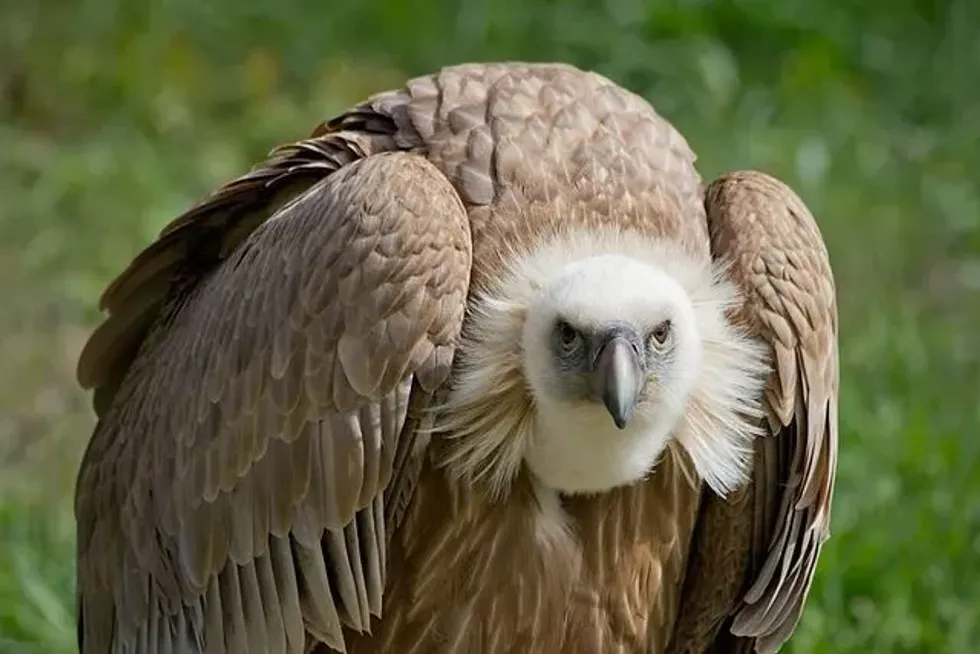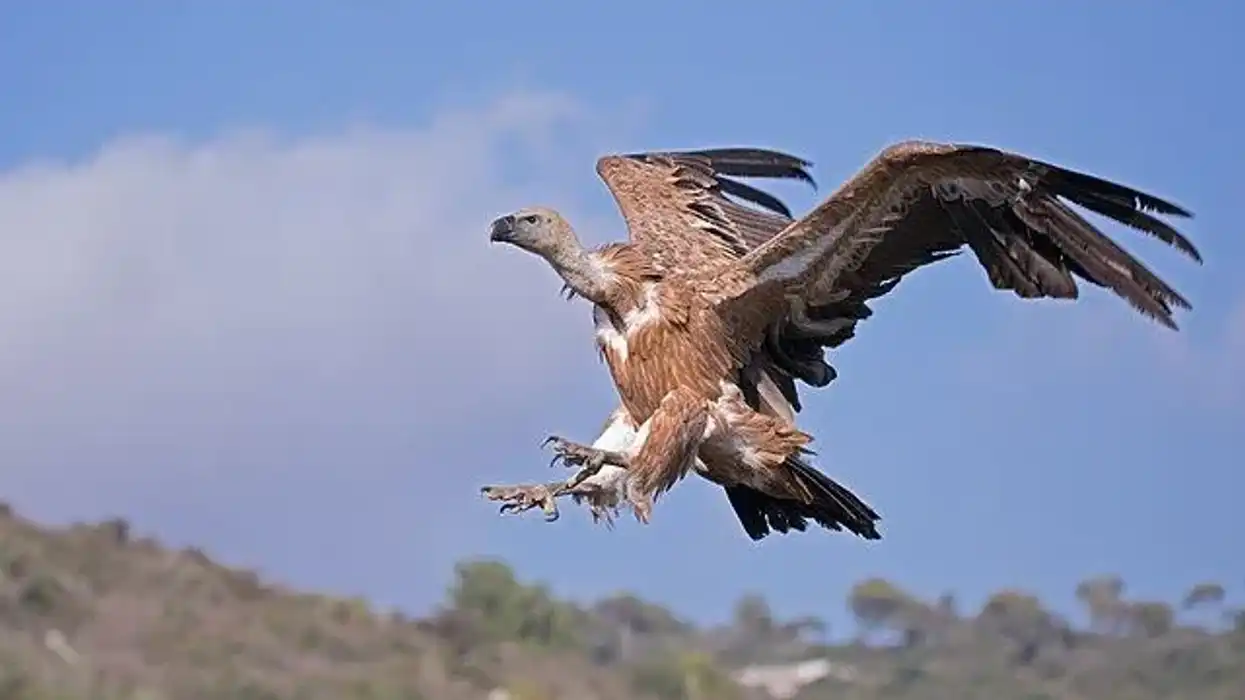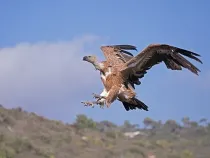Fun Accipitridae Facts For Kids

The family Accipitridae is one of the three distinct families belonging to order Accipitriformes. These birds are diurnal birds of prey. The family Accipitridae comprises a range of small to large birds including hawks, eagles, kites, harriers, and vultures.
It is the largest family of species comprising up to 233 species and 67 genera. The species are further recorded to have their subspecies, too. The Accipitridae members are spread throughout the globe except for Antarctica.
The family of Accipitridae species is divided into 5-10 subfamilies: Elanine kites (Elaninie), goshawks (Lophospizinae), gypaetine vultures (Gypaetinae), harpagine hawks (Harpaginae), melieraxine hawks (Melieraxinae), honey buzzards (Perninae) including Perine kites, bazas, cuckoo-hawks, and Madagascar serpent eagle, accipitrine hawks (Accipitrinae) including harriers, buteonine hawks (Buteoninae) including milvin kites and sea-eagles, serpent eagles (Circaetinae), Old World vultures (Gypinae), forest eagles (Harpiinae), and booted eagles (Aquilinae) are the subfamilies under the family Accipitridae.
These subfamilies are further divided into tribe and genus.
For instance, the subfamily Buteoninae is further divided into two tribes Milvini and Buteonini, which further divides into genera. Furthermore, the tribe Buteonini is classified into genus Butastur, genus Ictinia, genus, Busarellus, genus Rostrhamus, genus Helicolestes, genus Geranospiza, genus Buteo and several more genera.
The species are similar in many ways and have distinctive characteristics, too.
If the uniqueness of Accipitridae makes you interested to read more about similar species, you can read about the hooded crow and canyon wren.
Accipitridae Interesting Facts
What type of animal is Accipitridae?
Accipitridae is one of the families of diurnal birds. It includes various species of birds including hawks, eagles, kites, harriers, and vultures. The family classifies into 67 genera, further divided into 233 species.
What class of animal does an Accipitridae belong to?
Accipitridae belongs to the class Aves. It is one of the largest families from the order Falconiformes. It is predominantly a predator.
How many Accipitridae are there in the world?
The population of the species from the family Accipitridae is not computed. It is recorded that there are 233 species under 67 different genera.
Where does an Accipitridae live?
The Accipitridae are cosmopolitan species of birds. They are found around all the continents – including North America, South America, South Asia, Middle-east Asia, Africa, Europe, and many more and oceanic islands – except for Antarctica.
What is an Accipitridae's habitat?
Accipitridae have a wide range of habitats. They are mostly found in terrestrial habitats ranging from grasslands, meadows, woodlands, sea coasts, desserts, rainforests, agricultural lands, suburban areas to urban areas. They rely on trees for nesting, perching, hunting, and roosting, thus, their habitat revolves around areas having natural vegetation and trees.
Who do Accipitridae live with?
The species of birds from the family Accipitridae have distinctive behaviors, while some prefer to live solitarily, some are very loyal to their partners, thus, stays with each other until one of them dies. Rarely, these species are found to live in flocks or groups. The group is often referred to as convocations.
How long does an Accipitridae live?
The lifespan of species of Accipitridae varies from bird to bird. The average lifespan of birds from the family of Accipitridae ranges from 8-30 years. Sea-eagles, a species from the genus Haliaeetus are recorded to live up to 30 years, while Accipitridae hawks have an average lifespan of up to 20 years.
How do they reproduce?
Accipitridae are known to mate for life. They are mostly monogamous, while there are some polygynous and polyandrous species of birds, too.
While the breeding season may differ from one species to another, usually it ranges from winter to spring and often in summer. They are recorded to attain sexual maturity between ages one to nine. Female species lay two to nine eggs post their breeding season.
The litter size may vary from species to species. The eggs hatch into offspring and juveniles take their first flight post a year.
What is their conservation status?
All species of Accipitridae are not listed under the IUCN Red List of Threatened Species. While 60 species of Accipitridae are listed under the IUCN List, nine of them are Critically Endangered, four are Endangered, 23 are Vulnerable, and the other 23 are Near Threatened.
On the other hand, one species is listed under the category of Data Deficient. Species of Accipitridae as a whole are declining, and shooting, hunting, poisoning, and trapping are some of the prominent sources of the prevalent mortality rate.
Accipitridae Fun Facts
What do Accipitridae look like?
Species of Accipitridae have broad wings, strong legs and feet, sharp talons, and hooked beaks or bills. The birds vary in size while some are smaller, some bigger, and others medium-sized. The family has distinctive features depending on individual species.
A crested serpent eagle is brown with a short tail, yellow facial hair, and feet.
A Steller's sea eagle, a fish eagle, is one of the most unique eagles among the sea eagles having a yellow bill.
A harpy eagle has black, white, and gray plumage. The head is pale gray in color with a white belly. The harpy eagle is crowned with a double crest and the tail is black in color.
A European honey buzzard has a small head and a long tail. While the head of a male is blue-gray, females have brown heads. The females are larger than the males.
The broad-winged hawk is dark brown with a white belly and chest. The tail of the hawk is dark gray-black with white lines.
A swallow-tailed kite is a deep black and white in color. It has an elongated forked tail.
Furthermore, a northern goshawk is a noble-looking bird. The red-eye of a northern goshawk is a distinctive feature of the species. Its plumage range from blue to black.
There are many more species that have distinctive features, differentiating the species of Accipitridae from one another.

How cute are they?
You may or may not find the species of Accipitridae cute, but they are sure to appear a bit intimidating. The species have large to medium-sized bodies with varying Accipitridae characteristics are quite magnificent birds.
How do they communicate?
The species of Accipitridae have various mechanisms to communicate. While some have high pitch sounds, others have a soft voice. Generally, they are speculated to communicate using vocalizations. The species of birds are known to chirp, chatter, and whistle.
How big is an Accipitridae?
The species of Accipitridae vary in size, while some are small, others are large and many are medium-sized. Their length range from 9-47 in (23-120 cm).
While a sparrow hawk is the smallest species as it is 9 in (23 cm) long, the length of the largest Accipitridae, the cinereous vulture, is recorded to be as long as 47 in (120 cm). On the contrary, a black kite is a medium-sized species of Accipitridae.
How fast can an Accipitridae fly?
The species of Accipitridae are reported to have unique flying speeds. A golden eagle (Aquila chrysaetos) is recorded to have the highest flying speed at 80 mph (129 kph), other species such as red-tailed hawk fly at the speed of 118 mph (190 kph), and the flying speed of sea eagles range up to 31 mph (50 kph).
How much does an Accipitridae weigh?
The weight of Accipitridae varies from species to species. While the family of Accipitridae comprises hawks, eagles, vultures, kites, and harriers, their weight ranges from 0.2-31 lb (0.1-14 kg).
What are the male and female names of the species?
While birds from the family of Accipitridae are dimorphic, they do not have sex-specific names. A female can be called a hen and similarly, a male can be called out a rooster.
What would you call a baby Accipitridae?
There is no scientific name assigned to a baby Accipitridae, the common name can be referred to as a chick, nestling, fledging, or hatchling.
What do they eat?
The species of Accipitridae are opportunistic predators. Individual species may have varying food preferences, they generally feed on a variety of species.
Accipitridae feed on birds, eggs, bats, lambs, lizards, snakes, fish, carrions, and other small mammals, reptiles, amphibians, and invertebrates. While the birds are prominently carnivores, they rarely feed upon fruits. For instance, fruits of oil palm are an important food in the diet of palm nut vulture.
Some species like Egyptian vultures and hooded vultures also feed on animal and human excrement. The birds are speculated to use various hunting methods to prey upon their food.
Are they dangerous?
Accipitridae eagles, hawks, vultures, harriers, and kites portray aggressive temperament. They can be dangerous as they can attack humans and other species if are threatened or sense any sort of danger. Their methods used for hunting the prey are speculated to be quite harmful and dangerous. There are various documentaries highlighting injuries caused by wild species of Accipitridae.
Would they make a good pet?
Accipitridae are species of wild birds. Being predominant predators, they do not make good pets. Also, their aggressive temperament makes them risky to be petted.
Did you know...
The hunting mechanisms adopted by the species of Accipitridae are reported to harm the population of other organisms at the local scale. For instance, the species of the rough-legged hawk are held responsible for the decline in the population of lemmings for three to four years in the Arctic tundra.
Various species use distinctive hunting methods to prey. For example, a bat hawk uses active flight to hunts its prey.
While the common hunting technique is the perch-hunting as it consumes the least energy and often assists in detecting its prey, large winged techniques and slow soaring are also adopted to prey upon other species.
A few species also adopt the technique of cryptic coloration, wherein, they adapt the plumage and flying mechanisms of other similar-looking birds. For instance, a zone-tailed hawk looks similar to a turkey vulture, thus, the zone-tailed hawk imitates the turkey vulture to prey as the prey won't feel threatened considering the turkey vulture to be a harmless species.
Species of Accipitridae have four to eight times better eyesight than humans, assisting them to spot their prey from a considerable distance.
While most Accipitridae is diurnal, a bat hawk and letter-winged kite are an exception.
How many species of Accipitridae are there?
There are approximately 233 species under 67 genera in the family Accipitridae. The family is divided into 5-10 subfamilies which further classify into tribes and genus.
What is the meaning of Accipitridae?
The Accipitridae meaning is a large family of carnivores with an unnotched bill, rounded wings, long legs, includes species of eagle, hawk, vulture, harrier, and kite. Accipitridae pronunciation is akse-pi-tri-da-e.
Here at Kidadl, we have carefully created lots of interesting family-friendly animal facts for everyone to discover! Learn more about some other birds from our myna facts and coal tit facts for kids.
You can even occupy yourself at home by coloring in one of our free printable Accipitridae coloring pages.
We Want Your Photos!
More for You
See All
Bachelor of Arts specializing in Economics

Gurpuneet KaurBachelor of Arts specializing in Economics
As a skilled content writer, Gurpuneet has written and managed engaging content for multiple websites and companies. Driven by a passion for helping young people achieve their full potential, she brings a unique perspective to her work. She is currently pursuing a degree in Economics from Sri Guru Gobind Singh College Of Commerce. With extensive experience as a tutor, Gurpuneet has made a significant impact by providing guidance and academic support to students. Her dedication extends beyond tutoring as she has volunteered with Action India, where she offered medical assistance and educational aid to underprivileged communities. Additionally, Gurpuneet has contributed to the creation of student study guides for various educational agencies.
Bachelor of Commerce specializing in Marketing and HR

Pradhanya RaoBachelor of Commerce specializing in Marketing and HR
With a Bachelor’s degree in Commerce from Christ University, Bangalore, Pradhanya's passion for the English language and literature led her to explore the field of content writing, where she has gained extensive experience in writing, reviewing, editing, and fact-checking. She has also earned certifications in Google Ads Search, Google Ads Display, and Social Media Marketing, showcasing her proficiency in digital marketing.
Disclaimer
1) Kidadl is independent and to make our service free to you the reader we are supported by advertising. We hope you love our recommendations for products and services! What we suggest is selected independently by the Kidadl team. If you purchase using the Buy Now button we may earn a small commission. This does not influence our choices. Prices are correct and items are available at the time the article was published but we cannot guarantee that on the time of reading. Please note that Kidadl is a participant in the Amazon Services LLC Associates Program, an affiliate advertising program designed to provide a means for sites to earn advertising fees by advertising and linking to Amazon. We also link to other websites, but are not responsible for their content.
2) At Kidadl, we strive to recommend the very best activities and events. We will always aim to give you accurate information at the date of publication - however, information does change, so it’s important you do your own research, double-check and make the decision that is right for your family. We recognise that not all activities and ideas are appropriate for all children and families or in all circumstances. Our recommended activities are based on age but these are a guide. We recommend that these ideas are used as inspiration, that ideas are undertaken with appropriate adult supervision, and that each adult uses their own discretion and knowledge of their children to consider the safety and suitability. Kidadl cannot accept liability for the execution of these ideas, and parental supervision is advised at all times, as safety is paramount. Anyone using the information provided by Kidadl does so at their own risk and we can not accept liability if things go wrong.
3) Because we are an educational resource, we have quotes and facts about a range of historical and modern figures. We do not endorse the actions of or rhetoric of all the people included in these collections, but we think they are important for growing minds to learn about under the guidance of parents or guardians.







